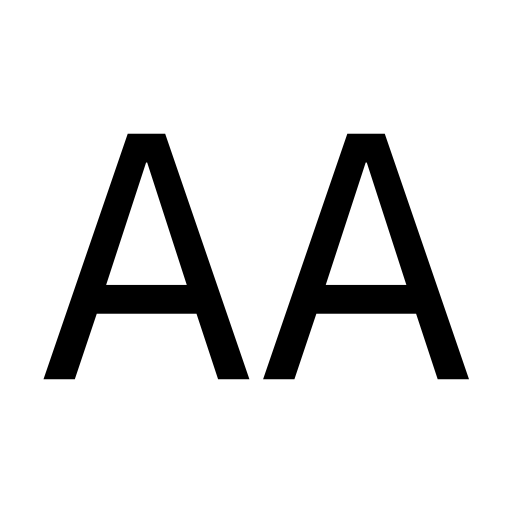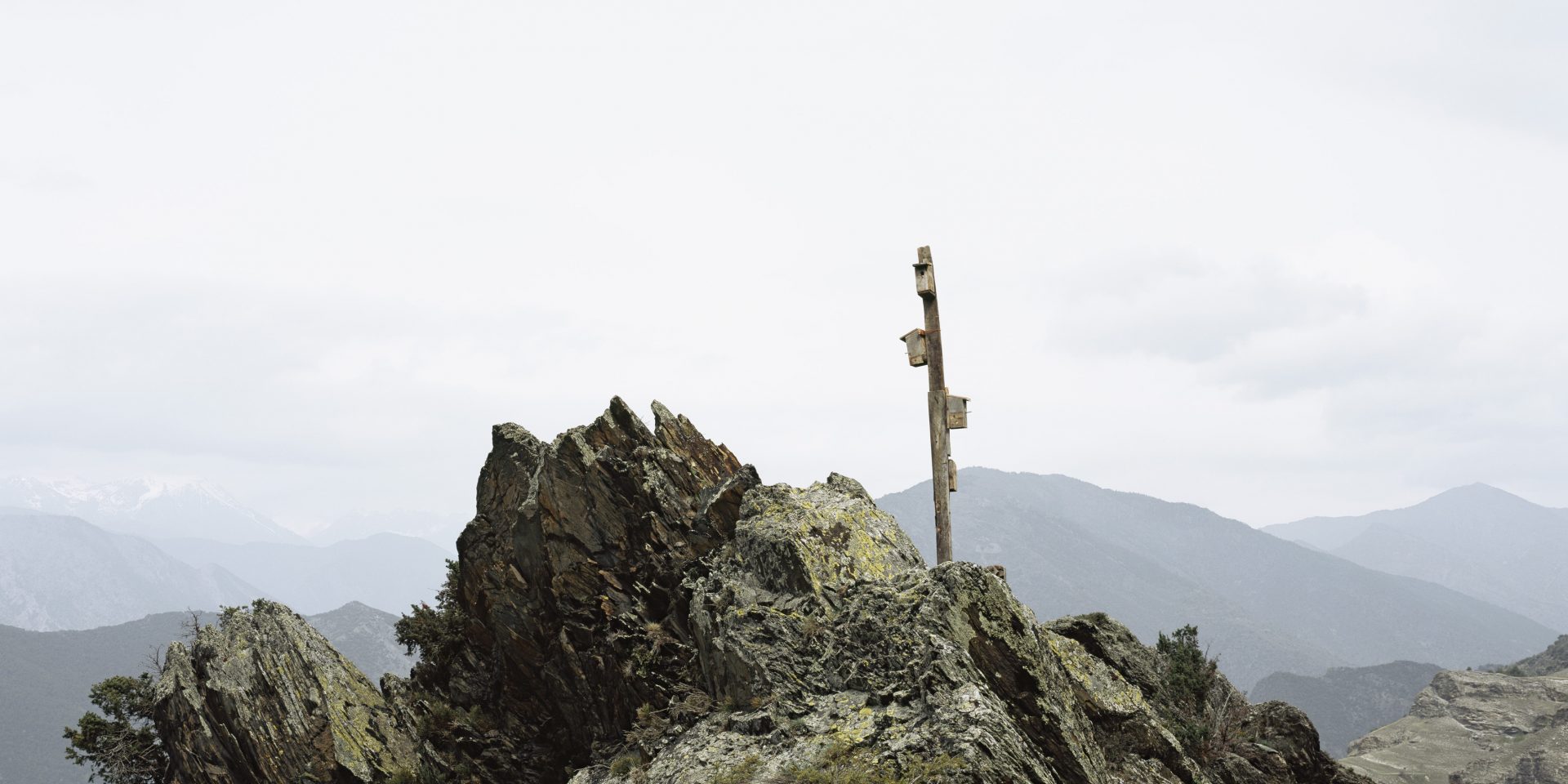Seen and Not Seen: On Axel Antas
Text by Martin Herbert
In 2007, a handful of forlorn wooden structures appeared in the vast, implacable landscapes of the Catalan Pyrenees. They were handbuilt, intended as birdhouses and, to judge from photographs such as Structure for Birds (Field), were tragicomically unsuccessful in attracting winged residents, even despite their generous numbers, while simultaneously registering as evidence of man’s discordant presence within wild nature. In due course these rickety objects were torn down, leaving only photographic traces. And by the time avian life does appear, a year later, in the art of the birdhouses’ maker, it’s already dead. In Still Life (2008), a small bird (a sparrow perhaps, though I’m no ornithologist) lies prone, on its back, on a block of wood suspended by threads: in the air one last time, but only through human intervention. In both photographs, the creature—a symbol, if you like, of mindless and miraculous harmony with nature—can’t be caught by human artfulness. Or rather, it can be caught, but only when its life is stilled.
For around a decade now, Axel Antas’s photography, drawings, films and evanescent sculptures have inventively revolved around attempts to grasp and engage with the natural world (though this subject, as we’ll see, can be capsuled within a larger set of concerns). They’re paradoxical works, succeeding through evoking frustrated efforts, unbridgeable distances. Immanuel Kant, author of the contextually salient phrase ‘the crooked timber of humanity’, looked at the night sky and was staggered and swept up by sublimity; Antas, in his 2005 series Whiteout, looks at the landscape and sees it, via overexposure and technological tinkering, half-blocked through a white mist. Floating fogs that resemble clouds appear in his Low-Lying Cloud Formations (2006-2007), but we’re a world away from, say, Constable’s raptly engaged cumulus studies. These are manmade events and simultaneously serve as obstructions, frustrating the sight of nature that, in any case, is parkland—more unnatural, man-manicured landscape.
What is evident in this work, first, is the desire for communing, merging with the natural: something one also sees in Antas’s drawings. In 2006, he began making hard-pencilled images of trees, tribute-like images whose detail takes a while to emerge, as the details of the Whiteout works also do. In Tree Structure (Plateau) (2008), one first sees a gnarled and broken tree in the foreground, then the eye start registering the woods behind it and more and more trees hove into view. You’re enveloped, or you’ve arrived at the outset of an enveloping, but you’re not in the forest, just as even the sharpest photograph of nature enacts a double play of beckoning and remove. You’re never really there, looking at artistic records of greenery. And when you are really there, in this century at least, you’re likely too much a product of culture and technology to really feel there.
And a product of art, too: there’s a lake and woods I like to visit outside Berlin, but I see the morning mists that rise off the waters through a Caspar David Friedrich filter. Friedrich ghosts Antas’s art, too, as does modernism. For a viewer even lightly versed in art history, it might be hard to look at the monochrome Geometry of Place (2010) photographs, with fine ropework intricately and geometrically wrapped around trees, and not think of Marcel Duchamp’s Sixteen Miles of String (1942), or of cubistic planes. Antas’s geometry suggests at once ordering, mapping and control: the woodland, one feels, implacably rejects it all. Art, under these auspices, registers as a continuum of attempts to capture, understand and transform the environment: see, for example, Antas’s Shaped Views (2014) series, in which the ropes attached to trees serve to drag them this way and that to suit the artist’s whims.
Now, it might be possible to read this work as a kind of para-environmentalism—to say that what it figures is mankind’s toxic, destructive footprint on the planet. This, I think, isn’t Antas’s aim. His work, rather, scales up beyond a concern with the natural per se into a larger thesis on alienation and being. Wherever we are, we’re marooned in ourselves. We are things in the world, but the world is something other than us. We are not our bodies either, though we are indivisible from them, and we can’t touch our quicksilver consciousness. Do we ever really understand what it means simply to be in the world? Because we sense that we are part of nature even if we resist the idea that man is an animal, the natural world is what we naturally seek to transfer into (and have such problems being in sync with), but the entirety of the external world and how we relate to it and understand it is something we grapple with all the time. Look at Geometry of Place again: the ropes are lines suggesting attempts to understand, but the subject doesn’t have to be a tree. The subject might be what it means for anything to be here—and by extension, for us to be here.
And then someday, crushingly, to be extinguished. For there’s another consistent thematic running through Antas’s work, one that can be seen plainly if we flip back to the birdhouses and the dead bird. The former are a product of time-consuming, futile labour, attempting to charm something from the skies, and the latter’s time has run out. To confront trees and Catalan mountains is to face something that was around long before us, and will be around long after. To draw a tree as intricately as Antas does is to inject time into the work itself, and to photograph something is to freeze it, arrest it in life. For Untitled (Sketch of a Tree) (2010), Antas inaugurated a project around what is thought to be the world’s oldest living individual clonal (or shared-root-system) tree. One wouldn’t know to look at it, but it develops from roots almost 10,000 years old. Antas’s response is a model of reverence. He represents it, first, by a pale, spectral, barely-there documentation on Super 8mm film—a now-antique medium, with time thus encoded into it—which, in the gallery, runs through a suspended loop that marks the four-metre height of the tree itself; and, second, by a modest drawing.
This spindly spruce, known as ‘Old Tjikko’ and located in Dalarna Province, Sweden, took root at the end of the last Ice Age. Either way, it’s around 150,000 lifetimes. At the very end of the 1990s, when the Long Now Foundation set up the Clock of the Long Now—a device set in a mountain in Nevada (surrounded by bristlecone pines, the second oldest type of tree), and designed to chime for the eponymous time period—they chose 10,000 years because this is as long as civilisation has existed. What do you do in front of a tree that is as old as civilisation? Maybe you do something that marks civilisation: you record it, using technologies that themselves were invented 40,000 years apart.
Antas’s work cuts two ways. On the one hand, it presents as optimistic: if you look at it, you’re constantly discovering more, as in the Whiteout works, where what seems at first blank becomes, in an inverse of dark adaptation, to be resplendent with pale detail. This is analogous, one would say, to a process of learning. On the other hand, and notwithstanding their absurdist humour, a great strain of melancholy runs through these works. This primarily has to do, I think, with what certain thought processes will do to the mind: thoughts of our extinction, thoughts of how we take our place in a world that will inevitably outlive us, not even notice us. (Though of course, recent generations have made sure that we’ll leave a mark on the Earth.) In the series of photographs Obstructed Views (2010), the solitary Rückenfigur standing on rocky promontories goes Friedrich one further; he’s half-enveloped in romantic mist, but the vapour—set in place, of course, by Antas—serves mostly to cover his head, the seat of thought. His mind is literally befogged. The tangle that runs through the mind and senses can’t be pictured: only the impossibility of picturing it is representable.
Early one morning in 2013, Antas photographed a structure he’d laboriously set in shallow waters in Finland, a tentlike thing involving a tarpaulin stretched over a hand-fashioned wooden structure, an abstract sculpture of sorts. He recorded it repeatedly in eerily still waters, manipulating the colours a little later: the blue tonality of one photograph referencing air trapped within snow, for example, and the emerald of another suggestive of saltwater. For the object, in the Monuments for the Unseen (2014) images, is a manmade attempt to represent icebergs. Antas’s work, though, betrays its own construction. We see the wooden poles holding the faux-berg up, just as we saw the strings elevating Antas’s dead bird and just as we saw the ropes pulling the trees into place. So that frustrated desire is there, to touch nature, even to create it. But something else is in play too, pertaining to representation and how what’s seen might parallel what’s understood. An iceberg is a thing mostly unrepresented: it’s a synechdoche, representing the whole through a part. And this, you might realise, is what Antas is consistently doing: building artistic structures that gesture, sadly yet irrepressibly, to everything that can’t be seen or held onto—what it means that we’re here, that we’ll go—but that feels, to anyone who doen’t block it out or disarm it with faith, like it couldn’t matter more.
Martin Herbert 2014

